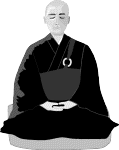The Tibetan Book Of The Dead, Transitions To The Otherworld, Page 1

The Tibetan Books of the Dead, The Bon
religion of Tibet and Tibetan Buddhism
both maintain that crucial moments of
transition are charged with great
spiritual potential, especially the
intervening moments between death and
rebirth. This intermediate period,
called bardo, is a state of suspended
reality in which the deceased are
presented with a series of opportunities
for recognition of the true nature of
Reality. If the deceased persons are
capable of recognizing the confusing and
often frightening bardo visions as
simply their own mental projections
reflective of the previous life's
thoughts and deeds (karma), the ongoing
cycle of birth and death will be
overcome. Failure to recognize these
appearances, on the other hand, leads
eventually to rebirth and further
suffering in cyclic existence (samsara).
To help the deceased travellers gain
insight into their ambiguous situation,
a spiritual teacher or lama recites
inspirational prayers and instructions
from special funeral texts--the first
stage in the ritual of the Tibetan
Books of the Dead.
BUDDHIST BOOKS OF THE DEAD
The Tibetan Book of the Dead, which is
more correctly referred to by its actual
title, The Great Liberation upon Hearing
in the Intermediate State (bar do thos
grol chen mo), is traditionally regarded
as the work of Padmasambhava, the eighth
century founder of the Nyingma-pa
Buddhist order and one of the first to
bring Buddhism to Tibet. Padmasambhava
is believed to have hidden many of his
esoteric teachings as literary
"treasures" or terma (gter ma) in
unusual and remote locations so that
they would later be recovered at a time
when their spiritual message would have
the most beneficial impact. The
remarkable people who discovered these
sacred terma texts were identified as
"treasure revealers" or tertöns (gter
ston). Among the most famous of these
discoverers of hidden teachings was
Karma Lingpa (Kar ma gling pa,
b.ca.1350), who is said to be the
revealer of the so-called Tibetan Book
of the Dead. According to his biography,
Karma Lingpa was born in southeast Tibet
as the eldest son of the great Tantric
practitioner Nyida Sangye (Nyi zla sangs
rgyas). At an early age, he engaged in
esoteric practices and was said to have
achieved numerous yogic powers. When he
turned fifteen, Karma Lingpa discovered
several hidden texts (terma) on top of
Mount Gampodar. From among these texts
he found a collection of teachings
entitled The Self-Emergence of the
Peaceful and Wrathful Deities from
Enlightened Awareness (zhi khro dgongs
pa rang grol), which included the texts
of the now famous Great Liberation upon
Hearing in the Bardo.
next page
return to index
